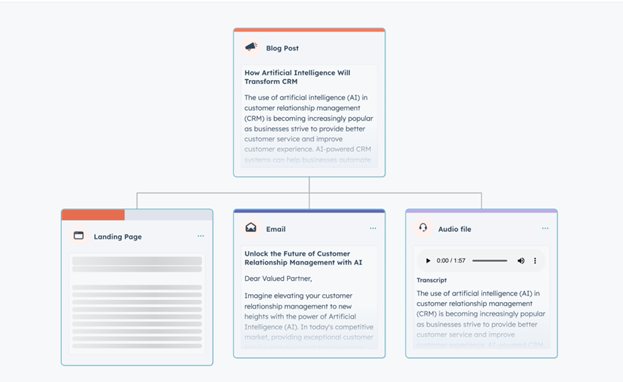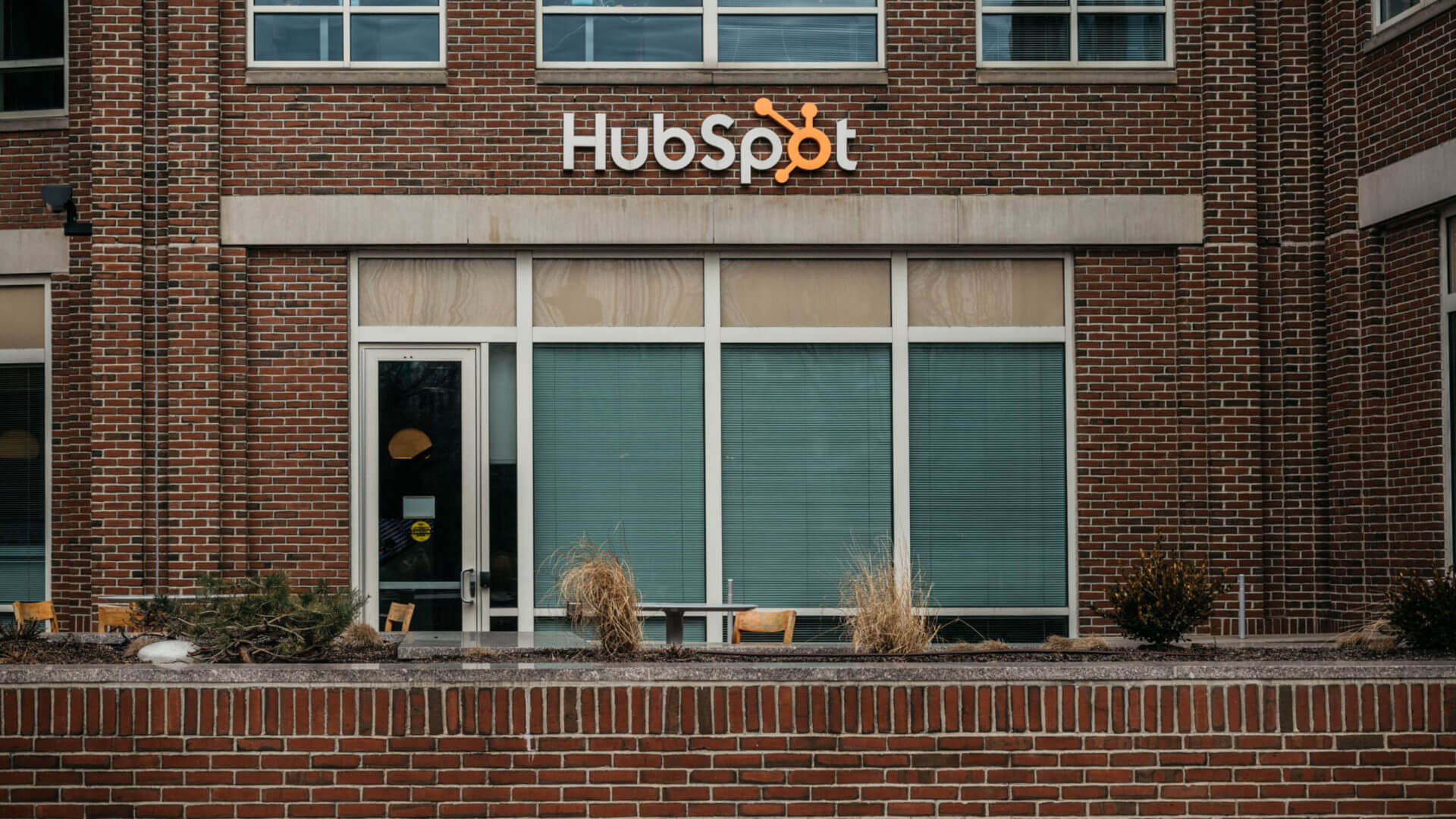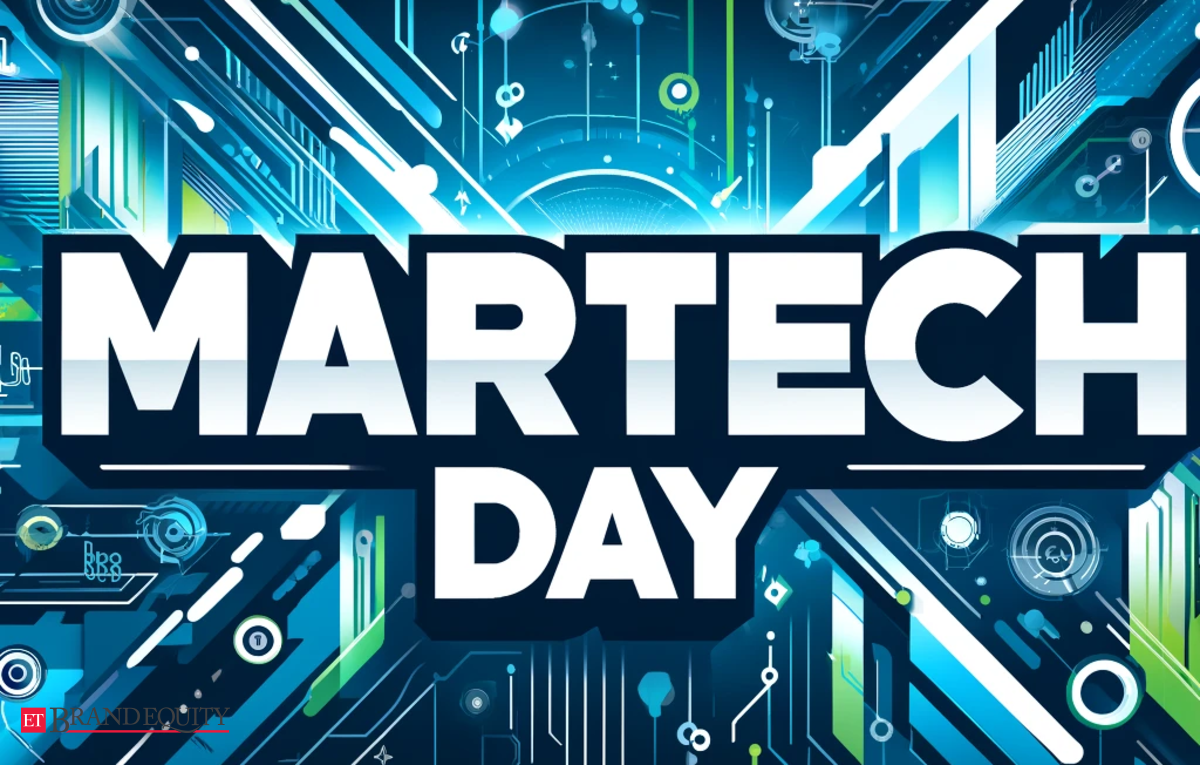Having spent more than a decade working with tools like HubSpot, I’ve seen how powerful these platforms can be for marketing and sales growth. But the launch of HubSpot’s Content Hub in April 2024 brings some new things to the forefront.
This new platform component packs a lot of opportunity into one area — in theory, it makes creating and managing content easier. It also helps marketers deliver personalized experiences that really grab customers’ attention. But what does this change really deliver and how will it change the future of our marketing responsibilities?
Content is still king. But we’re far beyond that
If you listen to the conversations in any marketing communities, there are two big themes that arise:
- Content that performs well needs a unique perspective, voice and point of view (in other words, thought leadership is outperforming fact-based content by a mile).
- Content needs to be a constant promotion and distribution game rather than a frequency of publishing one-and-done approach.
Outside of these marketing circles, the greater trends support this as well. We’re seeing the rise of tools like Opus Clip, which takes your long form video content and chops it into interesting smaller videos for socials, such as shorts or reels. We’re also seeing the rise in agencies and tools that help businesses extract or share the subject matter expertise from their leaders (whether that’s executives or front facing sales team members) and share that in a variety of platforms.
This is further compounded by the growth of podcasting and the popularity of YouTube, both of which lead with humans at the forefront — and unique content at the center of it all.
And that’s where we come back to the conversation about HubSpot’s Content Hub.
If unique content and value are the goal, we must find efficiencies elsewhere
One of the most appealing aspects of AI was the ability to churn out content more efficiently across multiple channels than we were able to do in the past. This is certainly true.
However, what was an advantage for some early adopters has now become white noise, with more and more articles, posts and even AI-generated comments filling our feeds. To hone in on creating the content that supports the two themes mentioned earlier (thought-leadership driven with effective distribution), any efficiency a marketing team can find will be paramount to the success of the program.
A fan myself of ChatGPT, I’ve witnessed team trainings on how to use a variety of AI tools to craft content and then put it into your CMS or landing page host for publish and distribution. But HubSpot is hoping to shortcut that experience and save time by keeping it all in one spot.
By consolidating all content tools in one ecosystem, HubSpot is ensuring these tools work better together, cutting out the productivity costs of constant app switching.
From inbound marketing to podcasting: Now in HubSpot too
Customers are hungry for content written from a standpoint of experience and lessons learned — the perfect recipe for podcast marketing. Content Hub now gives you an edge with its new podcasting capabilities. Before, if you wanted to podcast through HubSpot, you had to juggle third-party tools and RSS feeds. Now, everything is under one roof, without the hassle of switching between programs or platforms.
You can create, manage, and distribute your podcasts directly within Content Hub. In other words, you can quickly get your expert takes out there, and whip up all the related content to match (social posts, emails, blogs), all with a consistent brand voice across platforms.
This integration not only simplifies your content workflow, but also boosts your ability to lead conversations in your field, making your voice heard through the noise.
Side note: I’ve used many podcast hosts and they are incredible. But where many podcasts fall short is their ability to actually market their content — so while the podcasting functionality may not be as robust as the players in the space, marketers may be able to outperform the competition simply through better distribution and use of the marketing tools in the background.
Dig deeper: HubSpot’s April 2024 updates: More AI tools, refined service …
3 other ways Content Hub is showing us the future
There’s a ton of good stuff inside this Hub, but a few in particular might change the way your team works:
Content Remix (Beta)
Content Remix is a tool that helps you reuse your best content across different channels such as social media, blogs, landing pages, and emails. It uses AI to quickly adapt your existing assets, saving you time rewriting it all yourself.
This means you can easily update and distribute your content to reach more people without needing to create new content from scratch (as with ChatGPT, you’ll still need to do some significant editing for now).

It’s no professional copywriter yet, but it helps you paint the broad strokes of the content you want to write, and for assets like landing pages, autofills that text into an existing template inside HubSpot. When you need to whip up a quick landing page, this is a great starting point.
Content remix simplifies managing content updates across platforms, helping you keep your messaging consistent and relevant without the need for a bigger budget or more resources. This tool is especially useful for making your content go further with less effort.
From my standpoint, I’ve heard customers admit to having poor distribution and repurposing strategies due to lack of time and tools – and this is a step in the right direction to solving that.
Brand voice
This AI-powered assistant helps avoid the pitfalls of robotic-sounding AI text by analyzing your existing content to capture and replicate your brand’s style and tone. Once you set up Brand Voice in your Account Defaults settings, it makes generating and editing your content quick and consistent, whether you’re working across blogs, emails, or social media.
This helps you make sure that all your content, regardless of the creator, resonates with your audience while maintaining brand integrity. It also streamlines the editing process, helping you overcome bottlenecks and improve productivity by enabling faster content turnaround.
SEO tools
Updated SEO tools integrate with Google Search Console, making it easier than ever to optimize your content and keep up with SEO trends:
- AI-assisted optimization: Easily find and focus on the best keywords and content structures to improve your site’s ranking. Choose between auto-suggested titles based on search traffic and competition. Scan your site’s URL to get custom recommendations.
- Content strategy: Identify and target key topics that resonate with your audience, to drive up your site’s visibility and traffic.
- Track progress: Monitor your SEO efforts with straightforward analytics to see real returns and make informed adjustments.
- Integrated tools: Seamlessly combine SEO with HubSpot’s content management system for effortless content optimization and management, all without needing coding skills.
SEO isn’t dying just yet, but it’s definitely evolving. As AI-generated search results (offered by Bing, Perplexity, Google, ChatGPT, and the like) are reducing search traffic for informational searches, marketers need to seize every opportunity to stay competitive in the meantime. If your team doesn’t have much SEO expertise, Content Hub gives you a helpful leg up.
Marketers continue to wear a lot of hats – but this should help.
Content Hub is going to benefit marketers who wear a lot of hats, especially as it continues to evolve to become even more comprehensive.
We expect to see even more content tools moving forward, specifically things like video tools. These will further boost mediums that help with thought leadership, and will help drive expert conversations for your brand.
Opinions expressed in this article are those of the guest author and not necessarily MarTech. Staff authors are listed here.



